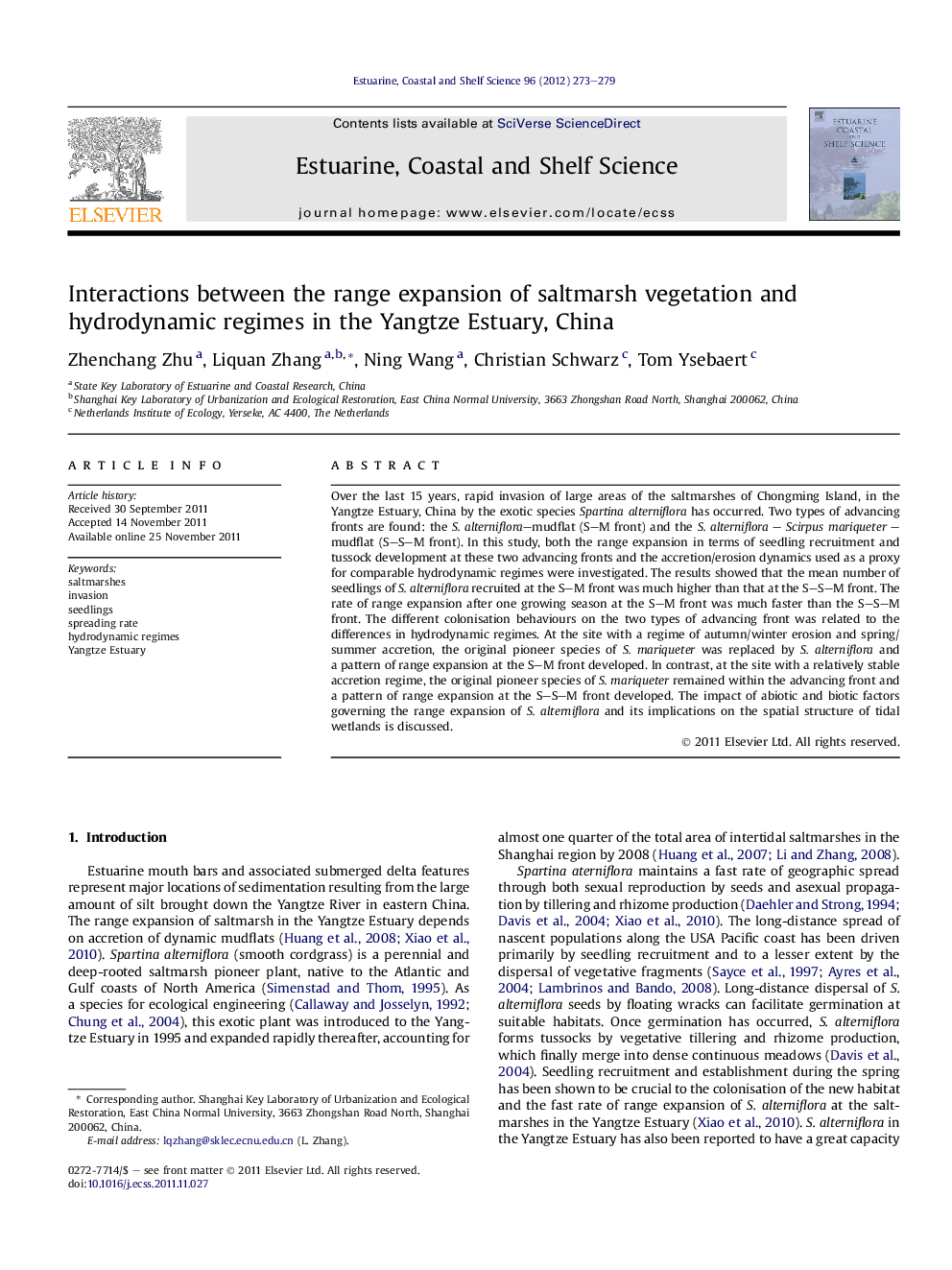| Article ID | Journal | Published Year | Pages | File Type |
|---|---|---|---|---|
| 4540319 | Estuarine, Coastal and Shelf Science | 2012 | 7 Pages |
Over the last 15 years, rapid invasion of large areas of the saltmarshes of Chongming Island, in the Yangtze Estuary, China by the exotic species Spartina alterniflora has occurred. Two types of advancing fronts are found: the S. alterniflora–mudflat (S–M front) and the S. alterniflora – Scirpus mariqueter – mudflat (S–S–M front). In this study, both the range expansion in terms of seedling recruitment and tussock development at these two advancing fronts and the accretion/erosion dynamics used as a proxy for comparable hydrodynamic regimes were investigated. The results showed that the mean number of seedlings of S. alterniflora recruited at the S–M front was much higher than that at the S–S–M front. The rate of range expansion after one growing season at the S–M front was much faster than the S–S–M front. The different colonisation behaviours on the two types of advancing front was related to the differences in hydrodynamic regimes. At the site with a regime of autumn/winter erosion and spring/summer accretion, the original pioneer species of S. mariqueter was replaced by S. alterniflora and a pattern of range expansion at the S–M front developed. In contrast, at the site with a relatively stable accretion regime, the original pioneer species of S. mariqueter remained within the advancing front and a pattern of range expansion at the S–S–M front developed. The impact of abiotic and biotic factors governing the range expansion of S. alterniflora and its implications on the spatial structure of tidal wetlands is discussed.
► Two types of advancing fronts of saltmarshes occur in the Yangtze Estuary, i.e. the Spartina alterniflora–mudflat (S–M front) and the S. alterniflora – Scirpus mariqueter – mudflat (S–S–M front). ► The mean number of seedlings of S. alterniflora recruited at the S–M front was much higher than that at the S–S–M front, and the rate of range expansion after one growing season at the S–M front was much faster than the S–S–M front. ► The different colonisation behaviours on the advancing fronts were related to the differences in hydrodynamic regimes.
